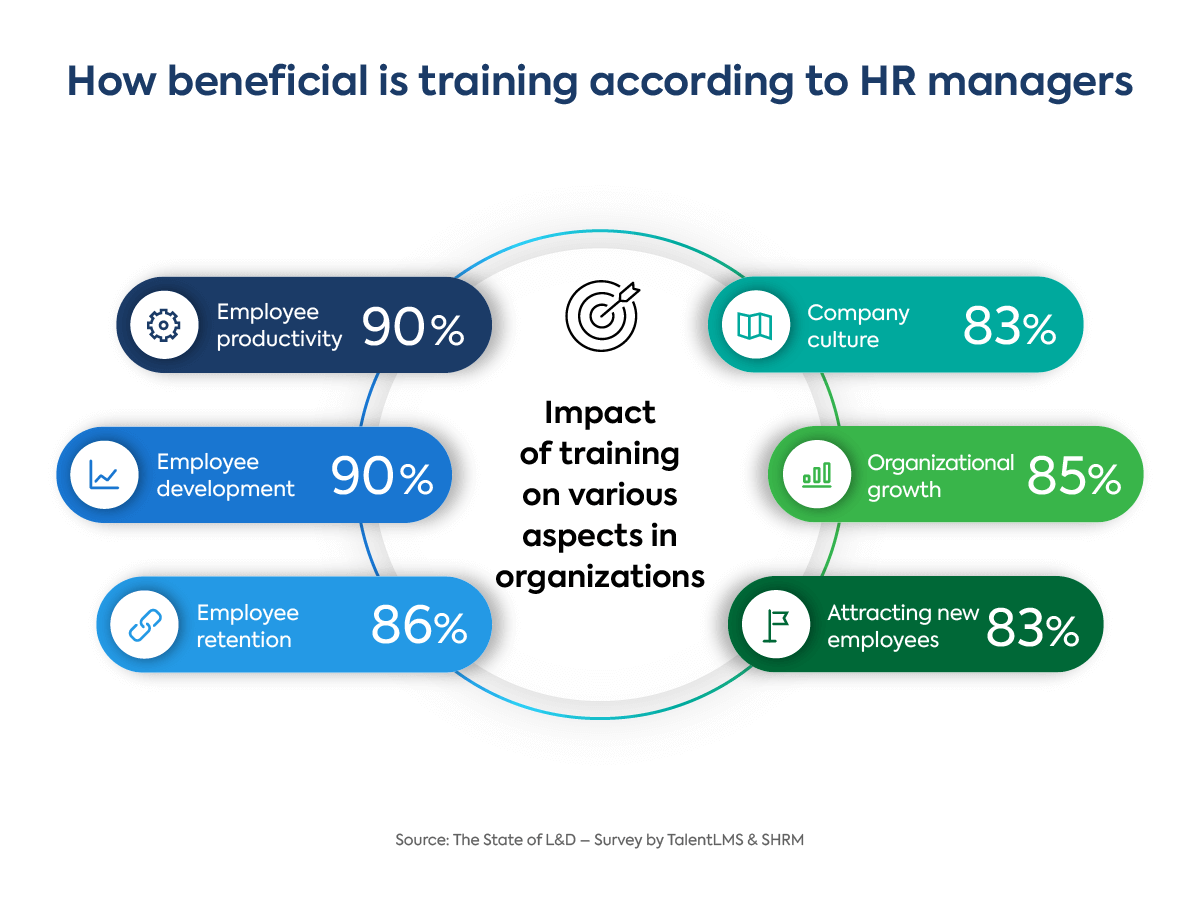"Training and Development Challenges: A Blueprint for Workplace Excellence"
What is Employee Training and Development?
A strategic method to improving the workforce's skills, knowledge, and capacities is employee training and development. It includes a methodical approach aimed at providing staff members with the instruments and assets required to carry out their responsibilities efficiently and advance company objectives. Initiatives for training and development go beyond merely imparting skills; they emphasise the establishment of a culture of lifelong learning, flexibility, and professional advancement.
Human resource management expert Raymond Noe states that "employee training and development involves the process of providing employees with the knowledge, skills, attitudes, and competencies required to perform their jobs effectively." (Employee Training and Development (7th edition) 2016)"
Fast technology Advancements: Training and development programmes face a great deal of difficulty due to the unrelenting speed of technology progress. Employees must adjust and pick up new abilities as new technologies are developed in order to stay relevant in their employment. In his landmark book "The Innovator's Dilemma," Clayton Christensen highlights how disruptive technology innovation is. Providing workers with the skills they need to handle these developments is an issue that organisations must face. Organisations may keep ahead of the fast changing tech world by using tactics including partnerships with educational institutions, regular needs assessments, and continuous learning initiatives.
Individual Learning Preferences: It can be difficult for organisations to create training programmes that meet the needs of all participants due to the diversity of people's learning preferences and styles. In his book "The Adult Learner: A Neglected Species," Malcolm S. Knowles emphasises how critical it is to comprehend the special traits of adult learners. He contends that adult learners are inherently self-directed and contribute a plethora of experience to the educational setting. Training programmes may become less effective if these traits are ignored. Organisations should use a learner-centric approach to address this issue. Providing employees with a range of learning modalities, including seminars, mentorship programmes, and e-learning modules, enables them to select the ones that best suit their learning styles.
Budgetary Restrictions: Budgetary restrictions frequently place a limit on the amount and calibre of training and development programmes. In "Effective Training: Systems, Strategies, and Practices," P. Nick Blanchard and James W. Thacker stress the significance of keeping economic limits in mind while coordinating training initiatives with organisational goals. Companies have to find a middle ground between the requirement for extensive training programmes and cost-effective solutions. Organisations might investigate creative and economical training approaches, like open-source learning materials, virtual training platforms, and collaborative learning environments, to solve financial constraints.
Reference list
Brown, K.G. (2018). The Cambridge handbook of workplace training and
employee development. New York, Ny: Cambridge University Press.
Buckingham, M. and Coffman, C. (1999). First, break all the rules :
what the world’s greatest managers do differently. New York, Ny.: Simon
& Schuster.
Craig, R.L. (1987). Training and development handbook : a guide to
human resource development. New York: Mcgraw-Hill.
Dugan Laird, Naquin, S.S. and Holton, E.F. (2003). Approaches to
training and development. Cambridge, Mass.: Perseus Books Group.
Harrison, R. (2000). Employee development. London: Chartered
Institute Of Personnel And Development.
Maxwell, J.C. (2022). The 21 Irrefutable Laws of Leadership : Follow
Them and People Will Follow You. Nashville: HarperCollins Leadership.
Noe, R. (2016). Loose-Leaf for Employee Training & Development.
McGraw-Hill Education.
Noe, R.A. (2020). Employee Training and Development. 9th ed. New
York, Ny Mcgraw-Hill Education.
Pink, D.H. (2009). Drive : the surprising truth about what motivates
us. New York, Ny: Riverhead Books.
Senge, P.M. (1990). The fifth discipline : the art and practice of the
learning organization. New York: Currency Doubleday.
Weiss, D.S. and Legrand, C.P. (2011). Innovative intelligence : the
art and practice of leading sustainable innovation in your organization.
Mississauga, Ont.: J. Wiley & Sons Canada.
Griffe


Blog has valued information to brush up the knowledge. Very healthy reference list is given. Attractive to read. Good job
ReplyDeleteMany thanks for the post of explaining the employee training and development considering the benefits as well as the impact on organization. Training and development is a must need of modern organization culture
ReplyDelete